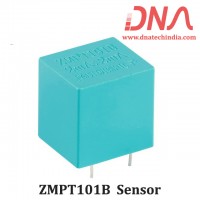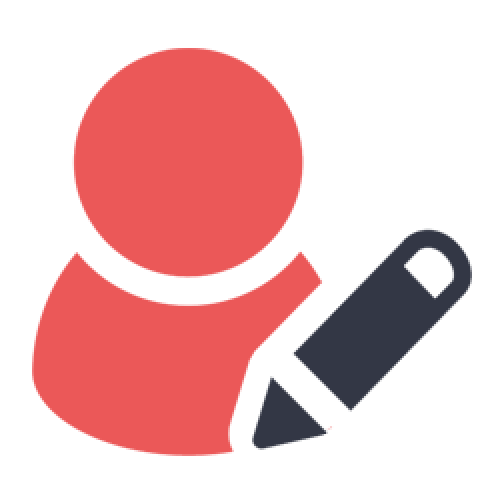Inductance |
|
Inductance is the name given to the property of a component that opposes the change of current flowing through it and even a straight piece of wire will have some inductance. Inductors do this by generating a self-induced emf within itself as a result of their changing magnetic field. When the emf is induced in the same circuit in which the current is changing this effect is called Self-induction, ( L ) but it is sometimes commonly called back-emf as its polarity is in the opposite direction to the applied voltage. |
|
When the emf is induced into an adjacent component situated within the same magnetic field, the emf is said to be induced by Mutual-induction, ( M ) and mutual induction is the basic operating principal of transformers, motors, relays etc. Self inductance is a special case of mutual inductance, and because it is produced within a single isolated circuit we generally call self-inductance simply, Inductance. The basic unit of inductance is called the Henry, ( H ) after Joseph Henry, but it also has the units of Webers per Ampere (1 H = 1 Wb/A). |
|
Lenz's Law tells us that an induced emf generates a current in a direction which opposes the change in flux which caused the emf in the first place, the principal of action and reaction. Then we can accurately define Inductance as being "a circuit will have an inductance value of one Henry when an emf of one volt is induced in the circuit were the current flowing through the circuit changes at a rate of one ampere/second". In other words, a coil has an inductance of one Henry when the current flowing through it changes at a rate of one ampere/second inducing a voltage of one volt in it and this definition can be presented as: |
|
|
|
Inductance, L is actually a measure of an inductors "resistance" to the change of the current flowing through the circuit and the larger is its value in Henries, the lower will be the rate of current change. |
|
We know from the previous tutorial about the Inductor, that inductors are devices that can store their energy in the form of a magnetic field. Inductors are made from individual loops of wire combined to produce a coil and if the number of loops within the coil are increased, then for the same amount of current flowing through the coil, the magnetic flux will also increase. So by increasing the number of loops or turns within a coil, increases the coils inductance. Then the relationship between self-inductance, ( L ) and the number of turns, ( N ) and for a simple single layered coil can be given as: |
|
|
Self Inductance of a Coil |
|
|
|
Where: L is in Henries N is the Number of Turns Φ is the Magnetic Flux Linkage Ι is in Amperes |
|
This expression can also be defined as the flux linkage divided by the current flowing through each turn. This equation only applies to linear magnetic materials. |
|
|
Example No1 |
|
A hollow air cored inductor coil consists of 500 turns of copper wire which produces a magnetic flux of 10mWb when passing a DC current of 10 amps. Calculate the self-inductance of the coil in milli-Henries. |
|
|
|
|
|
|
Example No2 |
|
Calculate the value of the self-induced emf produced in the same coil after a time of 10mS. |
|
|
|
he self-inductance of a coil or to be more precise, the coefficient of self-inductance also depends upon the characteristics of its construction. For example, size, length, number of turns etc. It is therefore possible to have inductors with very high coefficients of self induction by using cores of a high permeability and a large number of coil turns. Then for a coil, the magnetic flux that is produced in its inner core is equal to: |
|
|
|
Where: Φ is the magnetic flux linkage, B is the flux density, and A is the area. |
|
If the inner core of a long solenoid with N turns/metre is hollow, "air cored", the magnetic induction in its core will is given as. |
|
|
|
Then by substituting these expressions in the first equation above for Inductance will give us: |
|
|
|
By cancelling out and grouping together like terms, then the final equation for the coefficient of self-inductance for an air cored coil (solenoid) is given as: |
|
|
|
Where: L is in Henries μο is the Permeability of Free Space (4.π.10-7) N is the Number of turns A is the Inner Core Area (π.r2) in m2 l is the length of the Coil in metres |
|
As the inductance of a coil is due to the magnetic flux around it, the stronger the magnetic flux for a given value of current the greater will be the inductance. So a coil of many turns will have a higher inductance value than one of only a few turns and therefore, the equation above will give inductance L as being proportional to the number of turns squared N2. As well as increasing the number of coil turns, we can also increase inductance by increasing the coils diameter or making the core longer. In both cases more wire is required to construct the coil and therefore, more lines of force exists to produce the required back emf. The inductance of a coil can be increased further still if the coil is wound onto a ferromagnetic core, that is one made of a soft iron material, than one wound onto a non-ferromagnetic or hollow air core. |
|
If the inner core is made of some ferromagnetic material such as soft iron, cobalt or nickel, the inductance of the coil would greatly increase because for the same amount of current flow the magnetic flux would be much stronger. This is because the lines of force would be more concentrated through the ferromagnetic core material as we saw in the Electromagnets tutorial. For example, if the core material has a relative permeability 1000 times greater than free space, 1000μο such as soft iron or steel, than the inductance of the coil would be 1000 times greater so we can say that the inductance of a coil increases proportionally as the permeability of the core increases. Then for a coil wound around a former or core the inductance equation above would need to be modified to include the relative permeability μr of the new former material. |
|
If the coil is wound onto a ferromagnetic core a greater inductance will result as the cores permeability will change with the flux density. However, depending upon the ferromagnetic material the inner cores magnetic flux may quickly reach saturation producing a non-linear inductance value and since the flux density around the coil depends upon the current flowing through it, inductance, L also becomes a function of current, i. |
|
In the next tutorial about Inductors, we will see that the magnetic field generated by a coil can cause a current to flow in a second coil that is placed next to it. This effect is called Mutual Inductance, and is the basic operating principal of transformers, motors and generators. |
|
|
| Reproduced with permission from Wayne Storr |
| ( http://www.electronics-tutorials.ws/inductor/inductance.html ) |











